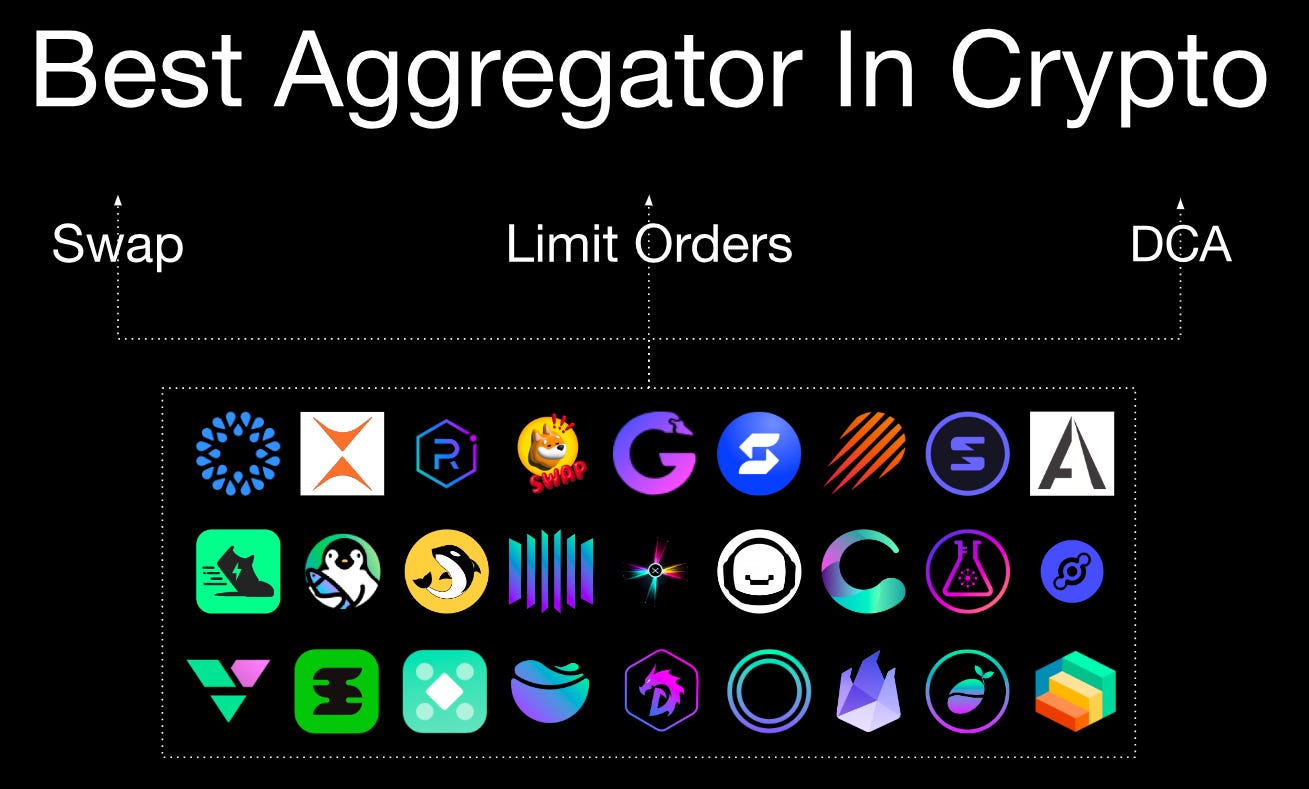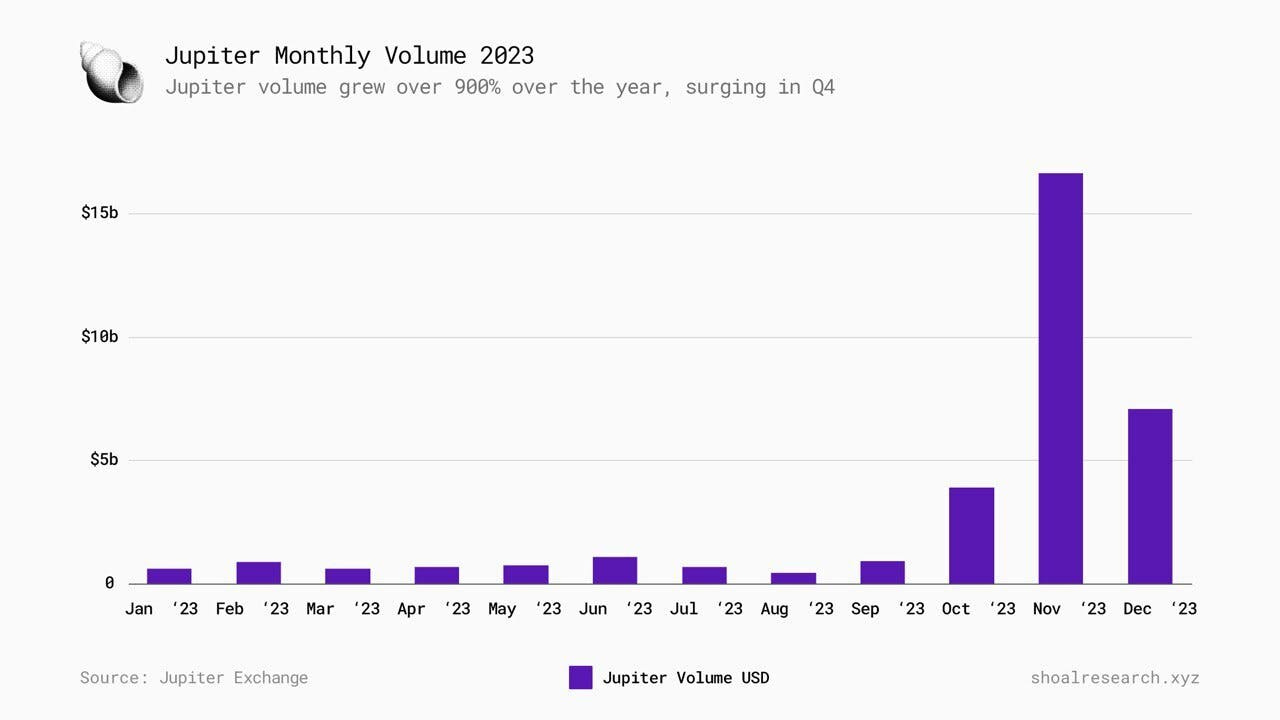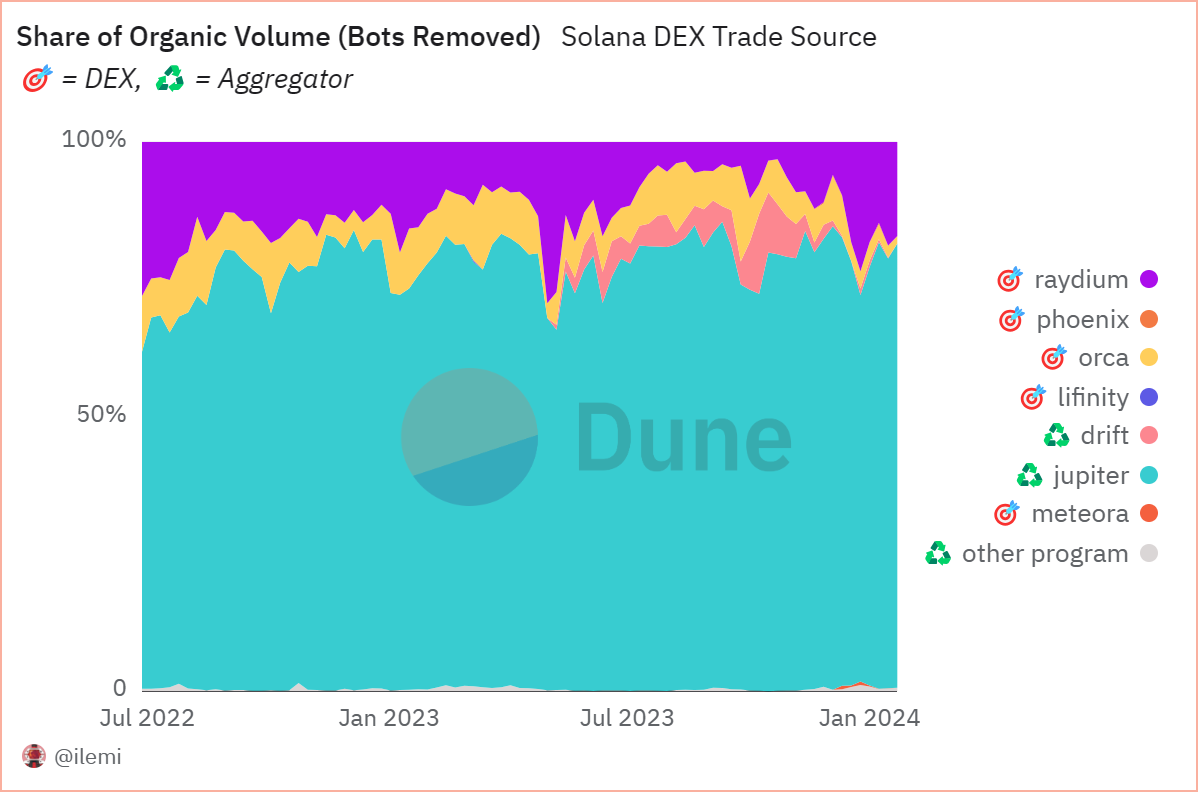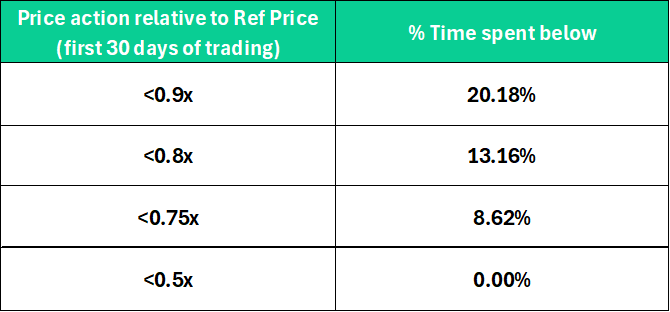In-depth interpretation of Jupiter: Solana's largest airdrop project in history, estimated potential airdrop rewards for JUP
Original Title: “The Biggest Airdrop in Solana's History - A Deep Dive on Jupiter”
Author: AYLO, alpha please
Compiled by: Elvin, ChainCatcher
Following the tremendous success of the last Jito airdrop (peaking at over $450 million in value), the next airdrop on the list is JUP, the token behind Jupiter, which is a significant DeFi aggregator on Solana.
This airdrop is scheduled for January 31 and is the most anticipated airdrop in Solana's history.
What makes Jupiter stand out? Will JUP deliver on its promises? At what price should we sell? Or when should we increase our positions?
In this report, I will delve into everything you need to know about Jupiter's product line, future plans, and the potential opportunities brought by the JUP airdrop.
Jupiter---One-Stop DeFi Service on Solana
Since its establishment in October 2021, Jupiter has consistently pursued the vision of creating the best decentralized trading experience on Solana. The platform achieves this by aggregating various DeFi functionalities into a single application, providing the most seamless user experience.
Although Jupiter was initially conceived as a swap engine, the protocol has undergone significant developments, including many different products tailored for various types of users, such as: Dollar Cost Averaging (DCA), limit orders, perpetual trading, and the recent launchpad.
In my opinion, the DCA tool may be the best product currently in DeFi.

Source: Jupiter Exchange
Jupiter's growth in 2023 has been remarkable, with monthly trading volume surging nearly tenfold—from $650M in January to an impressive $7.1B in December. Notably, following the announcement of the JUP token at Breakpoint, November's monthly trading volume set a record high, exceeding $16 billion.

In the same context, Uniswap's monthly trading volume fluctuated from a low of $17.4 billion to a high of over $70 billion during the same period.
Now, Jupiter has processed over $66.5 billion in trading volume and more than 1.2 million transactions, becoming a key layer in the Solana ecosystem. It accounts for over 70% of all organic trading volume on Solana DEXs, establishing itself as an important reference platform for Solana retail traders.

Source: Dune Analytics
Nevertheless, Jupiter remains committed to continuous innovation, aiming to improve existing features and launch new products aligned with its three main business model pillars:
- Providing the best user experience
- Maximizing the potential of Solana's technological capabilities
- Improving the overall liquidity situation on Solana
Given its unique position, I believe Jupiter is a bet on two things:
- 1. Long-term adoption of Solana: With network activity rebounding, 2023 is a year of rebirth for Solana. I believe it has the potential to continue growing and capture a larger share of the L1 market. This could be beneficial for Jupiter.
- 2. DeFi becoming mainstream: The future of trading is on-chain, and even CEOs of large traditional financial institutions like Larry Fink are starting to talk about "the tokenization of every financial asset." Therefore, it doesn't seem far-fetched to think that Jupiter could facilitate this transition.

The recently announced JUP token further embodies the strategic steps Jupiter is taking in this direction.
JUP---Symbol of DeFi 2.0
The JUP token marks an important milestone in Jupiter's development and spirit. Just as Uniswap's governance token UNI symbolizes the first wave of DeFi on Ethereum, JUP aspires to embody the essence of DeFi 2.0 on Solana.
JUP is designed as a governance token that will allow holders to influence key aspects of the ecosystem. This includes voting on critical aspects of the token itself, such as the timing of initial liquidity provision, future emissions after the initial mint, and key ecosystem initiatives.

Source: Jupiter exchange
The main goals of the token are:
- To inject vitality into the Solana ecosystem by attracting new capital flows and users.
- To create momentum for the launch of new ecosystem tokens: JUP is poised to be a catalyst for introducing more ecosystem tokens.
- To build a strong, distributed JUP community.
As outlined by the anonymous co-founder Meow, JUP aims to establish "the most effective, forward-looking, decentralized, non-internal voting DAO in DAO history."
Moreover, the utility of JUP will evolve over time, depending on the direction taken by the community. Potential future uses of the token may include:
- Reduced fees for perpetual exchanges.
- Improved access and allocation for launchpads.
- Fee sharing for Automated Market Makers (AMMs).
However, Meow has made it clear that they will not initiate revenue sharing until the user base reaches at least 10 times its current size.
Token Economics
The token economics reflect the spirit of the project, and Jupiter's vision is to keep it as simple as possible. The maximum supply is 10 billion JUP, with token distribution evenly allocated to two cold wallets—the team wallet and the community wallet. The team wallet will be used for allocations to the current team, financial needs, and liquidity provision, while the community wallet will be used for airdrops and various early contributors.

Airdrop Details
The first round of airdrops is scheduled for January 31, with 10% of the total supply initially allocated to the community. The airdrop details are as follows:
1. Even distribution to all wallets (2%):
200 million tokens will be evenly distributed to all users who used Jupiter before November 2, 2023, which amounts to about 200 JUP per user.
2. Tiered distribution based on scores, with scores based on unadjusted amounts (7%):
The distribution is approximately as follows:
- Tier 1: Top 2,000 users, each receiving 100,000 tokens (expected >1M trading volume)
- Tier 2: Next 10,000 users, each receiving 20,000 tokens (expected >100K trading volume)
- Tier 3: Next 50,000 users, each receiving 3,000 tokens (expected >10K trading volume)
- Tier 4: Next 150,000 users, each receiving 1,000 tokens (expected >1K trading volume)
3. Community members on Discord, Twitter, and developers (1%):
100 million tokens will be allocated to the most valuable contributors and community members.
There will be three more rounds of airdrops in the future.
JUP Token Valuation---Comparison with JTO
A common question that arises with new airdrops is determining the fair value of the token.
While there is no direct way for JUP to answer this question, one approach may be to conduct comparative analysis based on the recently airdropped JTO token on Solana.
JTO is the governance token of Jito Lab, a liquid staking platform based on Solana. This airdrop distributed 10% of the JTO supply to approximately 10,000 users. The peak value of the airdrop exceeded $450 million.
JTO Price Analysis
Using the initial quoted price of $2.13 on Binance (after the initial market fluctuations) as a reference price (RefPrice), here is a summary of the price trend for JTO after its launch:

Source: Binance
From this table, we can observe some trends:
Initially, on the first trading day, the token price experienced a sharp fluctuation from $1.74 to $3.77. Additionally, the price was above the initial quote of $2.13 for 83% of the time.
Furthermore, it is noteworthy that trading during the first week was indeed positive for JTO. The trading price of the token was above its reference price for over 97% of the time, reaching a historical high (ATH) of $4.45.
Now, looking at the percentage of time spent in different price ranges, we find that JTO did not spend a significant amount of time at its ATH level, as only 0.18% of the time was spent above twice the reference price of $2.13.

Additionally, we see that JTO did not experience more than a 50% retracement relative to its initial quote. Moreover, it spent only about 8.6% of the time in a state of retracement greater than 25%.

While JUP's price trend may not necessarily reflect JTO's path, you can make some assumptions:
- JUP's first trading day is expected to be highly volatile, potentially providing opportunities for short-term traders.
- The launch of JUP may generate significant excitement and could reach a local peak during the first week of trading. A rapid rise, exceeding twice the initial quote, may signal a selling opportunity.
- Conversely, if the price drops more than 50% from the initial quote, it may be seen as a buying opportunity.
"Overbought" Indicator---JTO FDV/LDO FDV Ratio
Jito is similar to the Lido protocol. Their main difference is that Jito operates on Solana while Lido operates on Ethereum. Therefore, when JTO launched, a reasonable method for token pricing involved examining the relationship between JTO's fully diluted valuation (FDV) and LDO's (Lido's governance token) FDV. Through this comparison, we can understand the market's valuation of JTO relative to its Ethereum counterparts.
Here is the JTO FDV/LDO FDV ratio over time since JTO's establishment:

We observe that after the launch of JTO, the trading price quickly rose above LDO FDV, reaching a ratio close to 1.9, which is twice LDO FDV. However, this spike may reflect that market excitement peaked, and the market quickly repriced JTO to a lower level. In the following weeks, the ITO to LDO FDV ratio showed a downward trend until it reached the 0.4 mark, followed by a strong rebound to the 0.7-0.8 level. So far, the market seems to have finally established a fair value within this range, which aligns closely with the average of 0.9 over the past few months.
We can conclude that for JTO, a ratio above 1.6 represents a clear overbought signal, while 0.4 represents a strong oversold signal.
Applying This Valuation to JUP
Just as LDO serves as a relative counterpart to JTO, we need to find a comparable anchor for JUP on Ethereum.
Given that Jupiter operates as the largest decentralized exchange (DEX) on Solana, with features such as Automated Market Makers (AMM), DCA, perpetual trading, and launchpad opportunities, it is challenging to find a single project on Ethereum that falls within a comparable range. Therefore, I believe a combination of Uniswap, dYdX, and DAO Maker can be interpreted as the closest peers to JUP. Thus, their fully diluted valuations (FDV) can be summed for comparison. As of the time of writing, the total FDV of UNI, dYdX, and MKR tokens is approximately $10.04 billion.
We can utilize this combined FDV data, along with various key levels of the JTO/LDO FDV ratio, to estimate JUP prices under different scenarios.

Source: Binance
By employing the same relative valuation analysis, we can derive these key price levels to enhance airdrop decision-making:

However, it is worth noting that JTO has a relatively high daily beta value of 0.86 against Solana. Therefore, JTO's price movements are closely correlated with Solana's price movements, and JUP is likely to follow a similar pattern. Thus, the current market conditions can significantly impact the hype generated by this airdrop.
As of the time of writing, Solana's trading price is between $80-82, down from levels of $120-130. This indicates a drop of over 30%, suggesting that market conditions may not be as optimistic as during the JTO airdrop.

When comparing the month before the JTO airdrop with the recent SOL prices, it is evident that market conditions have changed. Therefore, it seems reasonable to consider that this may have a negative impact on JUP's price.
Potential Airdrop Rewards
Can this airdrop be as large as the JTO airdrop? Let's analyze it together.
If we refer to the different rewards given at each level, we can derive the potential airdrop potential of JUP at given prices:

Source: Jupiter Exchange
In comparison, here are the JTO rewards at different levels and key prices:

Source: Jito Labs
Even at the historical low price of $1.323, the scale of the JTO airdrop at each level exceeds the potential rewards of the JUP airdrop, even if the price is $2, surpassing our valuation for JUP ($20,000 vs. $2,000).
For example, to match the rewards of the lowest JTO tier at its historical low price, JUP's trading price would need to exceed $20. This implies an FDV of $200 billion, a figure that is entirely unrealistic.
However, it must be emphasized that the JTO airdrop was concentrated among 10,000 users, while JUP will distribute its tokens to nearly 1 million users. This also means that there are many buyers on the sidelines for JTO hoping for exposure, while JUP's distribution is much broader, so the initial buyers may be fewer.
The market also did not anticipate that JTO would ultimately reach such a large market cap, and it seems that expectations for JUP are very high, which is another key difference to consider. When everyone expects the same thing, the outcome is rarely as anticipated.
Therefore, while the JUP airdrop may not provide substantial rewards for individual users like the JTO airdrop, its broader impact on a larger user base makes it one of the most critical and potentially significant airdrops in Solana's history.
We are likely to see a significant increase in on-chain activity following the JUP airdrop. For many, this will serve as a relief check, while for Degens, their style will be more aggressive, often chasing higher returns with what they perceive as "free funds" from JUP.
Finally, as people rotate their JUP profits back into SOL, SOL may also benefit from increased buying pressure, but it is clear that the market is much less bullish in the short term, making it difficult to gauge how SOL will perform in lower time frames.











